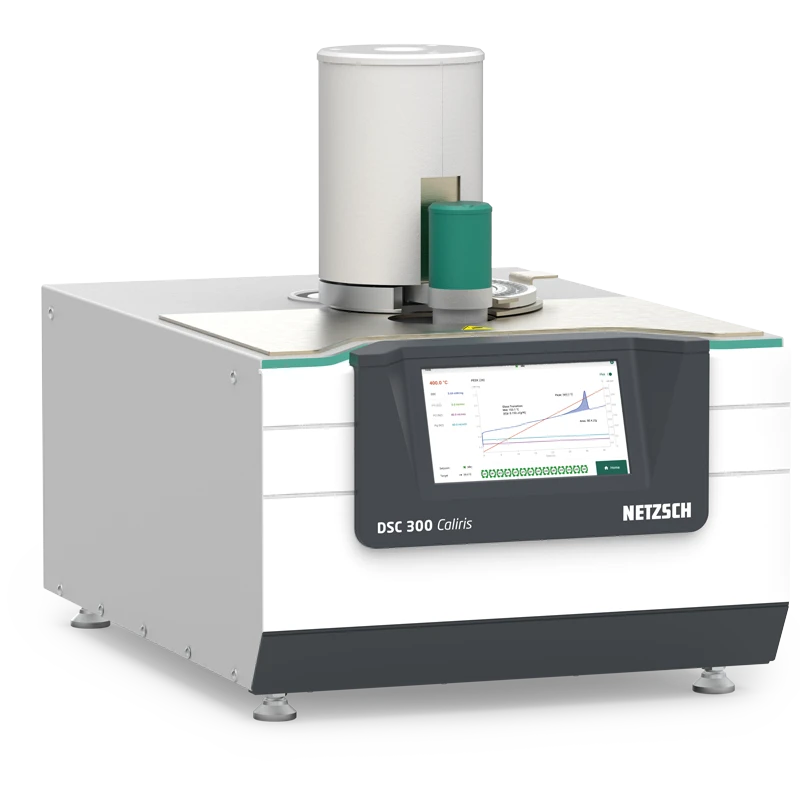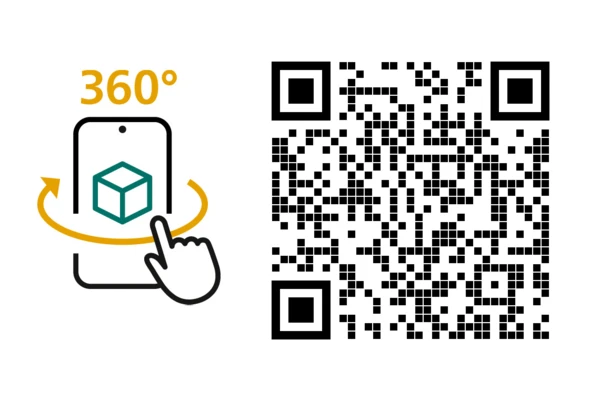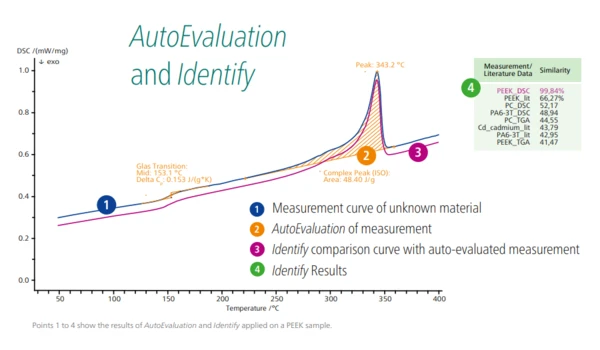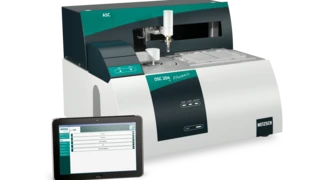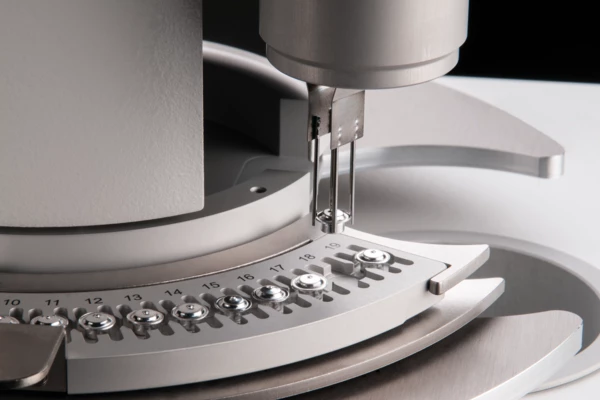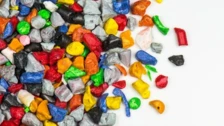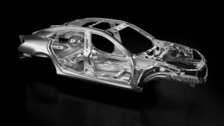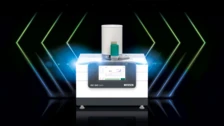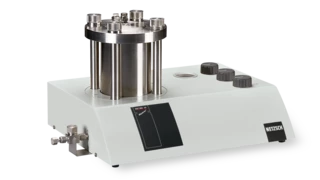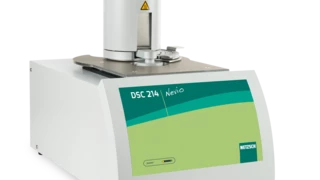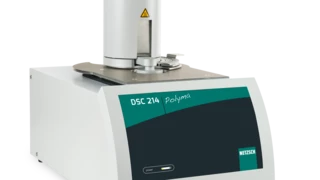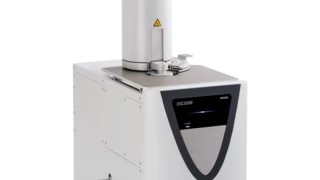Robust instrument with attractive price-performance ratio
Easy-to-use, robust, precise, optimized for everyday use – these are the features of the innovative DSC 300 Caliris® Classic. The unique design of this instrument encompasses everything needed for successful DSC investigations – regardless of whether the user is a beginner or an experienced professional. Above all, it is the innovative software that sets new standards: the already established AutoEvaluation and Identify now meet the next generation of data management LabV®, which keeps track of the collected data and organizes it for a smooth laboratory workflow.
The DSC 300 Caliris®Classic offers:
- a compact design for more space in your lab
- smart software that allows you to get started quickly with DSC measurements
- automated measurement and evaluation, making routine easy
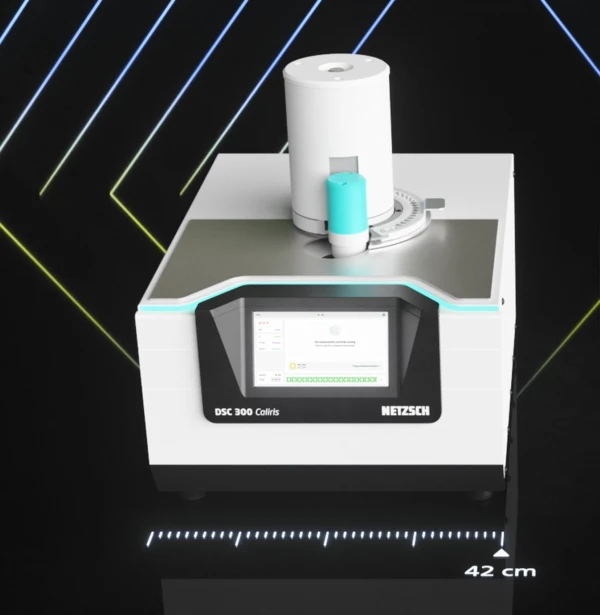
Compact Lab Instrument
With laboratory space often at a premium, the compact design of the DSC 300 Caliris® Classic with cooling accessories such as the intracooler makes it an excellent choice. It is perfect for at-line testing and can be easily set up in a production environment for QA/QC purposes.
Touch Display for Improved Productivity and Workflows
In addition to the conventional display, the DSC 300 Caliris® Classic also offers an optional integrated touchscreen display that provides detailed instrument and measurement information.
Once a measurement has been prepared using the Proteus®® software, it can be started directly from the touch display. When a measurement is in progress, the touch display provides up-to-the-minute measurement information without the need to access your PC.
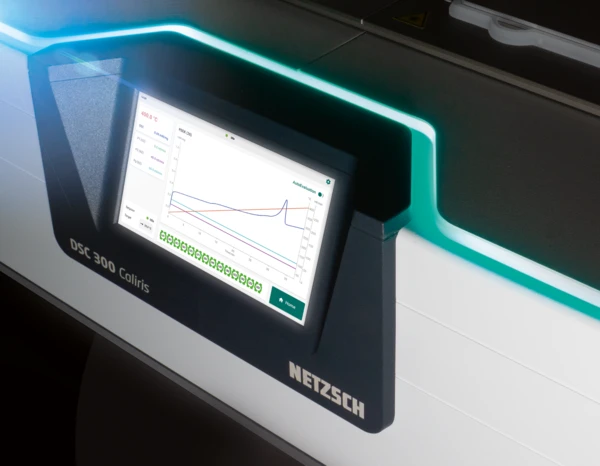
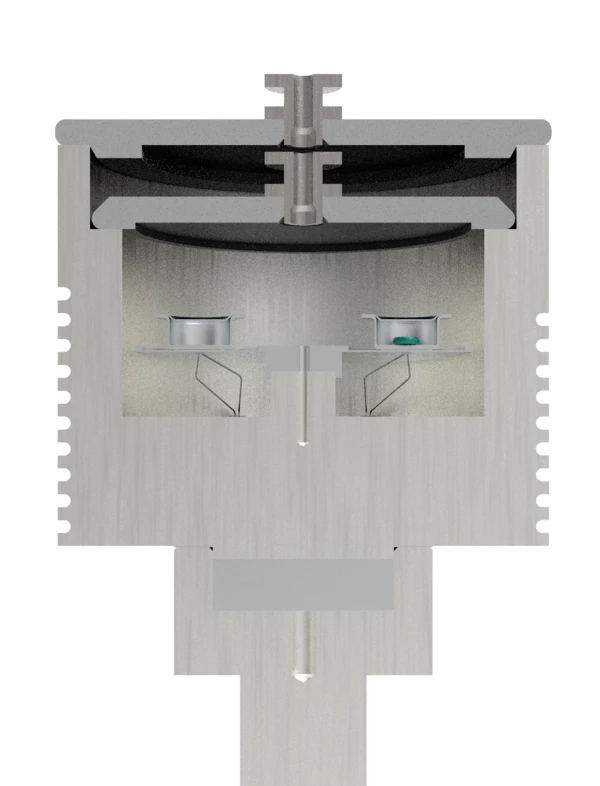
Excellent Performance Even in Less-Than-Perfect Environments
The monolithic DSC sensor is stable in harsh environments and provides optimal resolution. The sensor disks and thermocouple wires are laser-welded for high sensitivity and ruggedness. This is further emphasized by the fact that the sensor can be cleaned with a glass fiber brush. In the event of unwanted contamination of the cell or sensor, the temperature range of up to 600°C allows easy cleaning by baking out the contaminants. In addition, cleverly designed connectors allow quick and easy installation of various cooling systems.

Request a Quote
The future is now!
Bring our devices into your laboratory with the click of a button.
Simply scan the QR code and get a 3D model of the instrument directly on your mobile phone or tablet. With the help of the latest AR Technology (Artificial Reality), the 3D model can easily be placed in your laboratory in its original life size. This function is browser-based and requires no app.
Find out and be amazed!
Technical Data
Temperature range
Automatic Sample Changer
Heating/Cooling rate
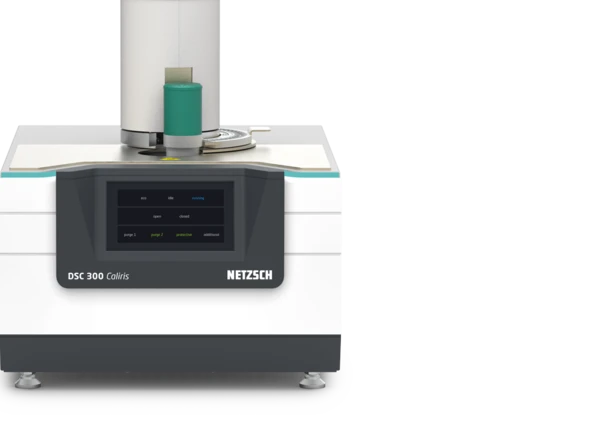
Enthalpy precision:
± 0.1% for indium
Specific heat determination: Optional
Temperature modulation: Optional
Gas atmospheres:
Inert, oxidizing, static and dynamic operation
Automatic Sample Changer (ASC):
Up to 20 samples and references, optional
Cooling device options:
Compressed air cooling (RT to 600°C)
IC40 (-40 °C to 600°C)
IC70 (-70°C to 600°C)
LN2 (-170°C to 600°C)
Indium Response Ratio:
> 100 mW/K
(Mean value, related to indium as standard material under measurement conditions typically used for polymer investigation)
Heating/Cooling rate:
0.001 K/min to 100 K/min
(Maximum rate depends on temperature)
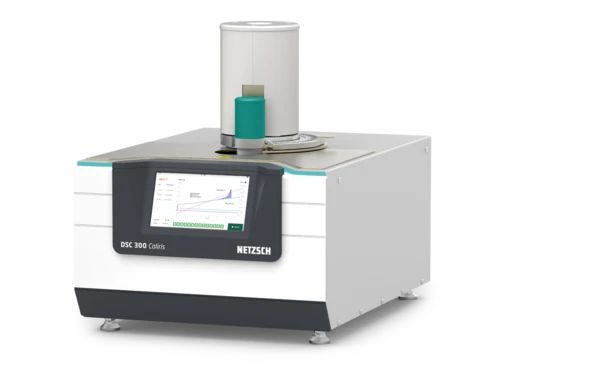
Software Proteus®
Get started quickly with SmartMode
The system's SmartMode interface has been meticulously designed with a clear and consistent structure, ensuring easy navigation and user-friendliness, even for beginners. Its intuitive interface provides quick and efficient access to the information you need.
The Wizards menu offers a comprehensive set of pre-configured measurement templates that require minimal input, allowing instant measurements with a single click.
In the Predefined Methods section, you will find all of the materials featured in the NETZSCH Thermal Properties of Polymers which can also be found on the NETZSCH Polymer Poster, along with corresponding measurement methods specifically designed for experimentation.
In addition, the User Methods menu allows users to save their previously performed methods as templates for future measurements. This eliminates the need to repeatedly redefine measurement parameters, streamlining the process.
Application Literature

